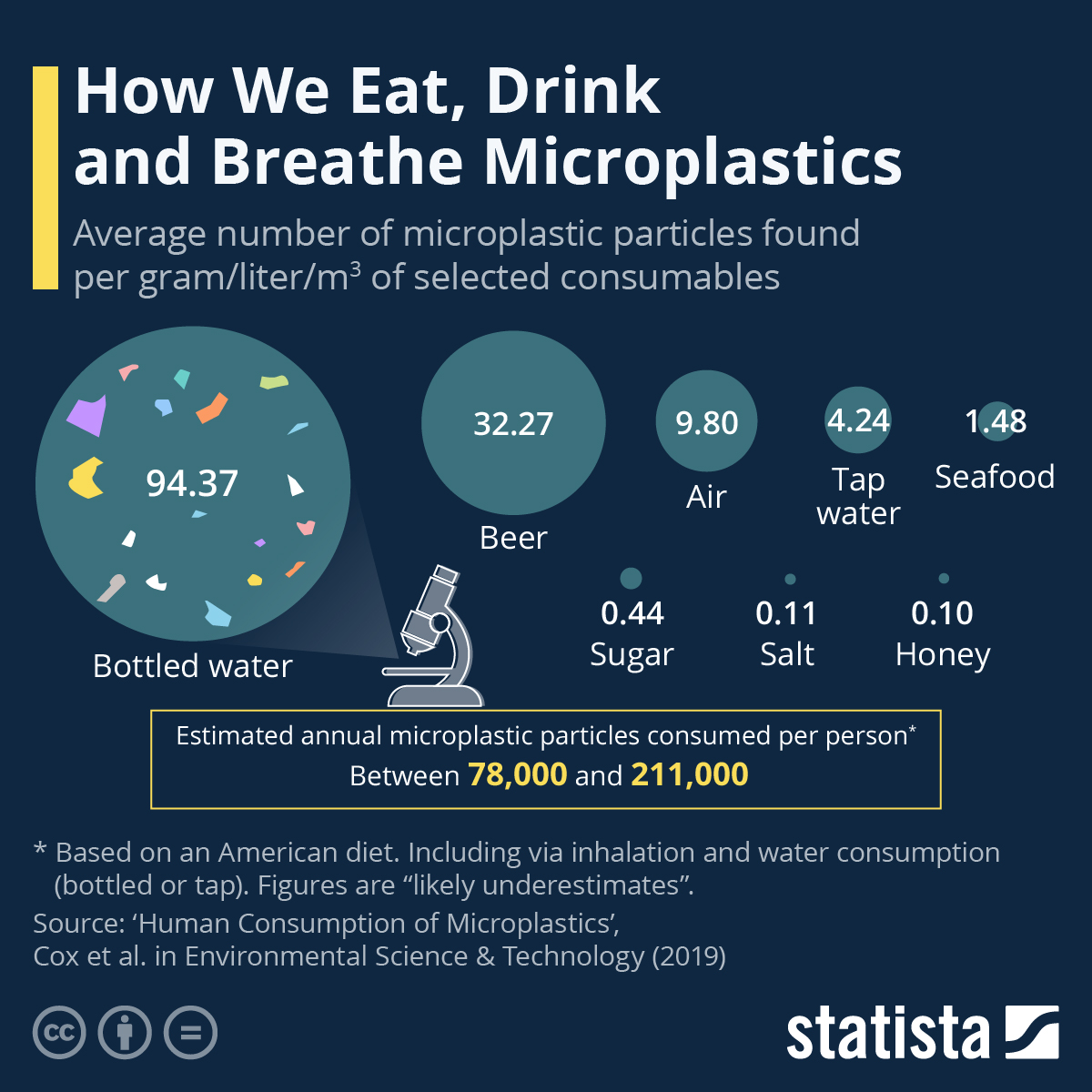
10 Ways You Are Consuming Microplastics Without Knowing
Microplastics are tiny plastic particles less than 5 millimeters in size, and they’ve become a pervasive issue in our environment. While many people are aware of the environmental impact of microplastics, few realize how easily they can enter our bodies through everyday activities and products. Here are ten surprising ways you might be consuming microplastics without even knowing it.
1. Drinking Water
Both tap and bottled water can contain microplastics. Studies have shown that microplastics are present in many water sources due to plastic pollution. Even if your water is filtered, some particles may still slip through. Drinking water from plastic bottles, especially when heated, increases the chances of ingesting microplastics.
2. Eating Processed Foods
Many processed foods come in plastic packaging that can leach microplastics into the food itself. High-temperature processing and microwaving food in plastic containers can release these tiny particles. Foods packaged in plastic wrap or containers, especially fatty or acidic items, are more likely to absorb microplastics.
3. Consuming Seafood
Seafood, particularly shellfish, is known to contain microplastics. Marine animals ingest these tiny particles while feeding, which accumulate in their bodies. When we consume seafood, we may inadvertently be consuming the microplastics that have been absorbed by these creatures.
4. Eating Packaged Snacks
Many packaged snacks, such as chips and cookies, come in plastic packaging that can release microplastics into the food. The heating and cooling processes involved in manufacturing and packaging these snacks may also contribute to microplastic contamination.

5. Using Personal Care Products
Many personal care products, such as exfoliating scrubs, shampoos, and toothpaste, may contain microbeads or plastic-based exfoliants. While some countries have banned microbeads, many products still contain plastic ingredients that can contribute to microplastic consumption.
6. Wearing Synthetic Fabrics
When washing synthetic fabrics like polyester, nylon, or acrylic, tiny microfibers shed and enter the water supply. These microfibers can end up in the food chain, as they are often consumed by aquatic organisms. Wearing these fabrics means you’re likely contributing to this cycle.
7. Inhaling Dust
Household dust often contains microplastics from synthetic materials from rugs, and other furnishings made of polyester etc., other broken-down plastics, and personal care products. When you inhale this dust, especially in poorly ventilated spaces, you could be unknowingly consuming microplastics.
8. Cooking with Non-Stick Cookware
Non-stick cookware often contains polytetrafluoroethylene (PTFE) or perfluorinated chemicals (PFCs), which can degrade and release microplastics over time. Using these pans at high temperatures can increase the risk of microplastic contamination in your food.
9. Using Plastic Utensils and Containers
Plastic utensils and containers can shed tiny particles when used or washed. Even BPA-free plastics can release microplastics into food and drinks. Opting for glass, stainless steel, or bamboo alternatives can help minimize exposure.
10. Drinking Beverages in Plastic Cups
When you drink beverages from plastic cups or straws, you might be ingesting microplastics, especially if the plastic has been exposed to heat or sunlight. This includes everything from your morning coffee to cocktails at a party.

Conclusion
Microplastics are an insidious part of our modern life, often entering our bodies without us realizing it. By being aware of these common sources of microplastic consumption, you can take steps to minimize your exposure. Opting for natural materials, reducing reliance on plastic products, and choosing whole, unpackaged foods can help you limit your intake of these tiny particles and contribute to a healthier lifestyle.
Being proactive about microplastics not only benefits your health but also helps protect the environment for future generations.

